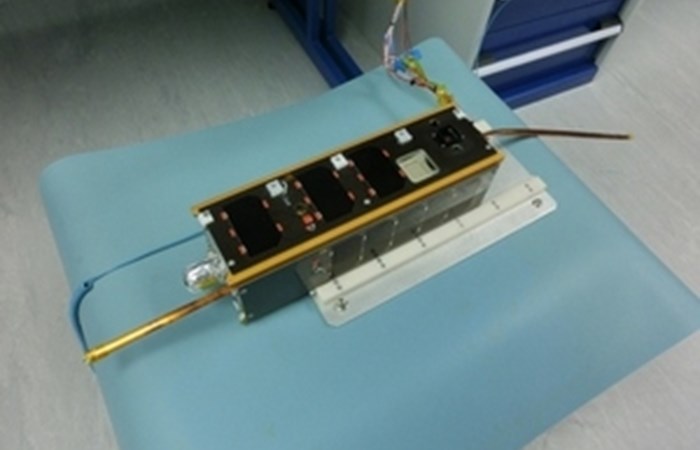UK Space Agency

The spacecraft has been shipped to the Satish Dhawan Space Centre in India, where it will undergo a series of final preparations before being integrated to the Polar Satellite Launch Vehicle (PSLV-C35).
Following a Memorandum of Understanding (MoU) signed in 2014, the UK Space Agency and ASAL have enhanced collaboration in space programmes. The MoU established AlSat Nano as a joint educational CubeSat development programme to be delivered by the Surrey Space Centre at the University of Surrey (SSC), for Algerian graduate students.

AlSat Nano is Algerias first CubeSat mission. The design, build and verification of the spacecraft took place at SSC as a hands-on learning exercise for the students, to demonstrate the practical elements of low cost space technology, giving them experience that should help Algeria strengthen its domestic space technology capability.
ASAL is providing the launch, and operations will be undertaken by Algerian operators trained in Surrey. During the spacecrafts commissioning, the operators will make use of the SSC ground station in Guildford, with operations then transferring to ASALs newly developed ground station in Oran.
The AlSat Nano programme, delivered jointly with our Algerian partner, demonstrates the UK Space Agencys open and collaborative approach to international space projects, and the UK expertise in the innovative and fast moving field of small and nanosatellites.

AlSat Nano
The spacecraft platform has been built using hardware sourced almost exclusively from UK suppliers, and one third of its volume has been made available to the UK CubeSat community as a free flight opportunity for self-funded payloads, via an open call and competitive selection process.
The three selected payloads are:
-
C3D2 a highly customisable CubeSat camera suite offering three fields of view and innovative on-board software processing capabilities. The payload will also be a remote experiment of the Open Science Laboratory - a suite of remote experiments that supports distance learning students studying science and engineering. C3D2 will offer these students the chance to operate a real payload on an orbiting spacecraft. The payload development is led by the Open University Centre for Electronic Imaging with sensor hardware provided by e2v Ltd and electronics from XCAM Ltd.
-
Thin Film Solar Cell a novel solar cell structure which is directly layered on cover glass just 1/10th of a millimetre thick. Effects from the space environment will be measured, with the aim of allowing the organisations involved a route to product development and commercial exploitation of this technology. This project is led by the Swansea University Centre for Solar Energy Research with contributions from the University of Surrey, Qioptiq Ltd and Surrey Satellite Technology Ltd.
-
AstroTube Boom a retractable CubeSat-compatible boom, deployable up to 1.5 metres in length from a volume around the size of a small business card holder. This technology would enable CubeSats to carry out a greater range of science experiments that require sensors to be held as far away from the spacecraft as possible to reduce interference, and could also form the basis of de-orbit systems for future missions.
The payload also carries a magnetometer, one of the most compact of its class, to carry out measurements of the Earths magnetic field, and RadFET radiation monitors. The payload is led by Oxford Space Systems Ltd, collaborating with partners including the Science and Technology Facilities Councils RAL Space and Bartington Instruments Ltd.
